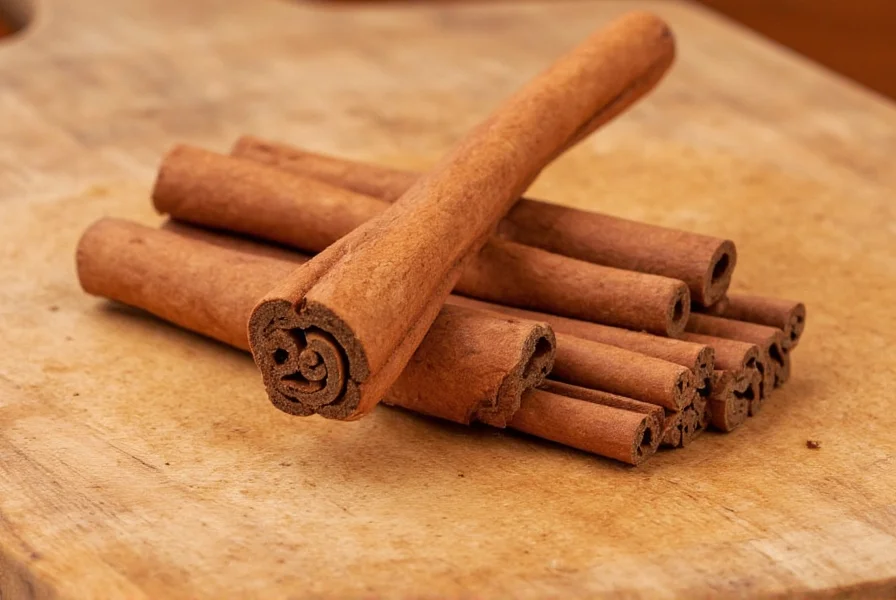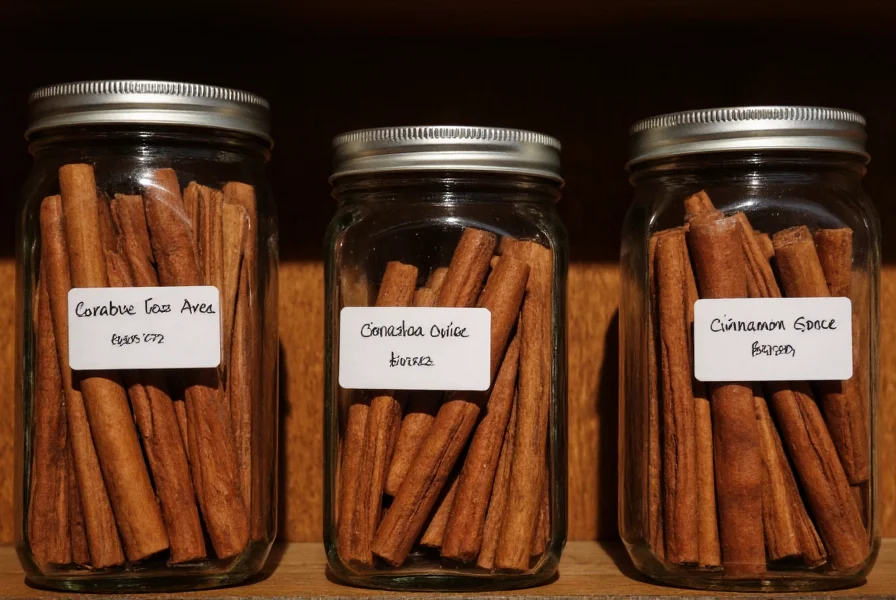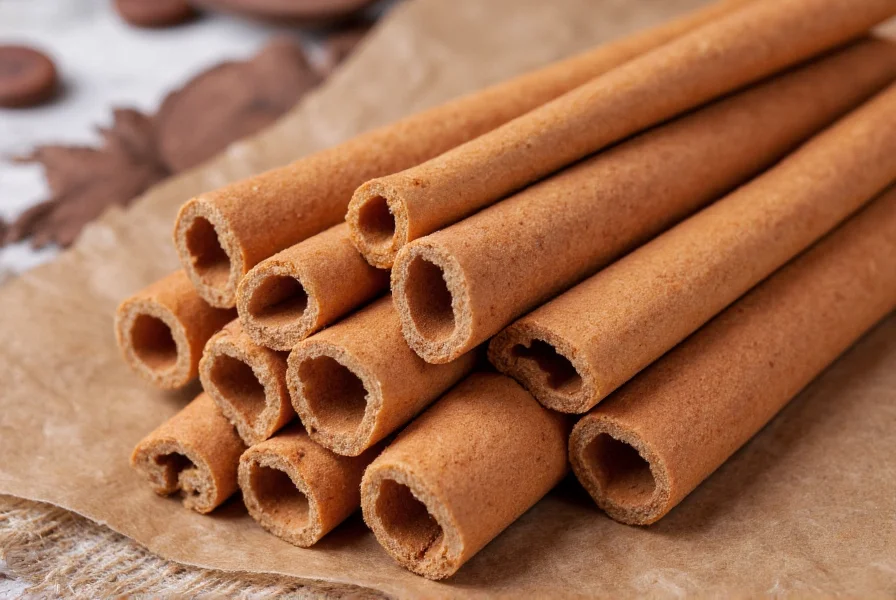Understanding the unique properties of cinnamon sticks unlocks their full potential in your kitchen. Unlike their powdered counterparts, these natural spice forms maintain flavor integrity for up to 4 years when properly stored. Professional chefs and home cooks alike value cinnamon sticks for their ability to impart subtle, nuanced flavors to dishes without the bitterness sometimes found in ground versions.
What Exactly Are Cinnamon Sticks?
Cinnamon sticks represent nature's perfect spice packaging—the curled bark of evergreen trees from the Cinnamomum genus. Harvesters carefully peel thin layers of inner bark during the rainy season when the trees are most pliable. As the bark dries, it naturally curls into the familiar quill shape we recognize as cinnamon sticks. This traditional harvesting method has remained largely unchanged for centuries, preserving the spice's integrity and quality.
Ceylon vs Cassia: The Two Main Cinnamon Stick Varieties
Not all cinnamon sticks deliver the same flavor profile or health benefits. The market primarily offers two distinct types, each with unique characteristics that affect both culinary applications and potential health impacts.
| Characteristic | Ceylon Cinnamon | Cassia Cinnamon |
|---|---|---|
| Origin | Sri Lanka, Madagascar, Seychelles | China, Indonesia, Vietnam |
| Appearance | Multiple thin, delicate layers | Single thick, rigid layer |
| Color | Light tan to medium brown | Dark reddish-brown |
| Taste Profile | Subtle, sweet, citrus notes | Strong, spicy, slightly bitter |
| Coumarin Content | Very low (safe for regular consumption) | High (limit regular consumption) |
| Common Names | True cinnamon, Mexican cinnamon | Chinese cinnamon, Saigon cinnamon |
The Science Behind Cinnamon Stick Production
The transformation from tree bark to spice stick involves precise timing and technique. During harvesting, workers make parallel cuts in the bark of two- to three-year-old shoots, then a perpendicular cut to loosen a section. The inner bark separates easily from the woody stem when harvested at peak moisture content. As the bark strips dry in shaded conditions, they naturally curl into quills. Multiple quills often nest inside each other, creating the multi-layered structure characteristic of premium Ceylon cinnamon.

Practical Applications in Cooking and Baking
Cinnamon sticks excel in applications where gradual flavor release enhances the final product. Their structural integrity allows for easy removal after infusion, preventing overpowering spice notes. Consider these professional techniques:
- Infusing liquids: Add one 3-inch stick to 4 cups of liquid for syrups, poaching liquids, or mulled beverages
- Rice and grain dishes: Toss a stick into the cooking water for subtle aromatic enhancement
- Stocks and braises: Include with other aromatics for complex background notes
- Dessert garnishes: Use whole or broken pieces as edible decoration
- Spice grinding: Create custom blends by grinding sticks with other whole spices
Maximizing Shelf Life: Proper Cinnamon Stick Storage
Preserve your cinnamon sticks' potency with these evidence-based storage methods. Unlike ground cinnamon, which loses 87% of its essential oils within six months, properly stored sticks maintain quality for years. The key factors affecting longevity include:
- Air-tight containers reduce oxidation by 73% compared to open storage
- Cool, dark locations preserve volatile compounds better than warm areas
- Whole sticks retain flavor compounds 4 times longer than pre-ground versions
- Freezing extends shelf life to 4+ years with minimal quality degradation

Cinnamon Sticks vs Ground Cinnamon: When to Use Which
Understanding the functional differences between these forms prevents recipe failures. Cinnamon sticks provide gradual flavor release ideal for long-cooking applications, while ground cinnamon delivers immediate, uniform distribution. Consider these guidelines:
- Use sticks for: Poaching liquids, mulled wines, rice pudding, chai tea, and any dish cooking longer than 20 minutes
- Use ground for: Baking, spice rubs, quick sauces, and recipes requiring uniform spice distribution
- Conversion ratio: One 3-inch stick equals approximately ½ teaspoon ground cinnamon
- Flavor intensity: Sticks provide more nuanced flavor; ground offers stronger immediate impact
Signature Recipes Featuring Cinnamon Sticks
These professional applications showcase cinnamon sticks' unique capabilities. Unlike ground cinnamon, which can become bitter when cooked too long, sticks maintain balanced flavor throughout extended cooking times.
- Indian Chai: Simmer 2 sticks with 4 cups water, 2 cups milk, 4 crushed cardamom pods, and 4 black tea bags
- Moroccan Tagine: Include 1 stick with onions, garlic, and preserved lemons for authentic flavor base
- French Poached Pears: Infuse poaching liquid with 1 stick, ½ cup sugar, and orange zest
- Mexican Mole: Toast sticks before grinding to enhance complex flavor profile
- Spiced Simple Syrup: Steep 3 sticks in 2 cups sugar/water mixture for cocktails and beverages
Addressing Common Cinnamon Stick Misconceptions
Several myths persist about cinnamon sticks that affect their proper usage. Research shows that cinnamon sticks don't "expire" but gradually lose potency. The white crystalline substance sometimes appearing on sticks represents natural essential oils migrating to the surface, not mold. Contrary to popular belief, breaking sticks doesn't release more flavor—the entire surface area infuses liquid equally whether whole or broken.
Conclusion
Cinnamon sticks represent one of nature's most versatile and enduring spice forms. By understanding their unique properties, proper storage methods, and optimal culinary applications, you can significantly enhance your cooking results. Whether crafting authentic ethnic dishes, creating signature beverages, or simply elevating everyday recipes, cinnamon sticks offer flavor complexity and convenience that ground versions cannot match. Their extended shelf life, controlled infusion capabilities, and distinctive presentation make them an indispensable pantry staple for serious cooks.











 浙公网安备
33010002000092号
浙公网安备
33010002000092号 浙B2-20120091-4
浙B2-20120091-4